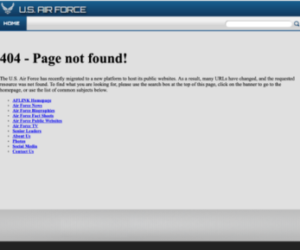
If you’ve been having trouble recruiting for roles at your manufacturing company, you’re not alone. Statistics published in 2019 indicated that 89% of manufacturers polled reported an inability to fill all open positions. The research showed that retiring baby boomers and general misperceptions about manufacturing jobs were among the primary difficulties businesses faced.
Filling a manufacturing company with top-tier talent is not an easy task. However, these seven tips will make it more manageable.
1. Offer Appealing Perks to New Hires
You can’t necessarily expect to find all the required manufacturing workers in your company’s immediate area. That’s why you should reassess the incentives for people located elsewhere to move and take open positions. Similarly, evaluate whether the advantages of working at your company are attractive enough to new hires no matter where they live.
The ways manufacturers cater to people looking for work and keep current employees happy vary. One company in Oklahoma distributes free steel-toed boots to workers, while a Pennsylvania plant offers complimentary memberships to the YMCA. It’s also common for manufacturers to entice people with thousands of dollars to cover their moving expenses. Others encourage people to stick around by presenting them with the chance to earn retention bonuses.
Consider looking at competitors’ job postings. What do they offer that could make people want to work there instead? Pay attention to things candidates say when turning down your offers, too. Do they consistently mention things that kept them from accepting positions? You could incorporate that feedback into new hire package improvements.
2. Make Commitment to Quality a Central Part of Job Postings
You’re also more likely to bring top-notch manufacturing talent if people looking for job opportunities understand that outstanding quality is a central part of your operations. If people know you prioritize high-quality outcomes, you’re less likely to see resumes from applicants who aren’t ready to uphold that commitment through their actions.
For example, you could make sure the job advertisement mentions that the company won awards for the last three years. You might briefly discuss how working at the company gives people chances to be on a quality improvement committee that meets every month to talk about room for improvement. It’s also advisable to bring up how continuing education opportunities a company offers directly support an emphasis on quality.
When candidates make it to the interview process, consider asking them to describe situations where their work affected the quality of a produced item, and what they did to ensure consistency. Alternatively, prompt candidates to disclose some of the things they routinely do to maintain excellence in their tasks. Such questions emphasize that quality is a necessity at your business.
3. Be Specific About Your Requirements
Your best chance of attracting the most-qualified talent happens when you give plenty of details about what you require. You can compose a vague job description faster, but you’ll likely waste more time than anticipated when most of the applicants who contact you don’t have the skills or experience you need.
For example, maybe you’re ready to hire a plant manager but won’t consider people without five years of experience in that role. Alternatively, perhaps there’s an open maintenance position, and you want that person to have the formal qualifications to handle boiler retubing. Tube damage is one of the most common causes of destroyed boilers. Retubing can restore normal function without replacing the equipment, so someone who can do the job is a smart investment.
It could take a while to get the wording of your job advertisement exactly as you want it. Devoting the time to doing it should be worthwhile in the long run. Specificity acts as a screening technique to confirm that people without the necessary skills or experience should look elsewhere.
4. Develop and Maintain a Positive Company Culture
Your company culture can play a crucial role in successful recruitment efforts. People who love where they work are less likely to leave for what they perceive as better opportunities — meaning you may not need to hire as often. Similarly, those who appreciate the workplace environment may gladly recommend friends to fill open roles.
Connecticut’s Tier One Machining and Assembly created a five-pillar structure about a decade ago to represent its corporate aims. Rick Hall, one of the company’s three founders, explained, “We wanted to get ahead of the curve in succession planning and make sure we were setting ourselves up right for the future. Also, it was getting harder and harder to find the right people.”
Interpersonal harmony, ongoing learning and continuous improvements are some of the main cultural facets at Tier One, but your manufacturing company probably has others. Spend time thinking about what goals you want to achieve, then the investments necessary to make them happen. You can also ask current employees for input about their favorite aspects of the company and explore how to highlight and nurture those characteristics even more.
5. Expand Your Candidate Network
Trouble attracting fantastic candidates doesn’t only happen because of a lack of talent. It could also occur when you’re looking in the wrong places or not considering certain groups of job-seekers. Examine your approaches and determine if you may be overlooking groups of people who may be eager and able to excel in the roles you need to fill.
For example, several manufacturers and their partners launched programs to provide employment and training options to people on the autism spectrum and other neurodiverse individuals. Companies that took this approach often report that people in these groups are often more productive and detail-oriented than their peers.
There is also an increasing number of white-collar workers pivoting to manufacturing work for a variety of reasons. Some lost their jobs and experienced age discrimination when trying to find similar employment. Others found that the work they were most familiar with no longer fulfilled them and liked the idea of getting educated in less than a year through a manufacturing-specific certificate program.
6. Launch an Internship Program
If you’re frustrated by seeing too many candidates that fall short of the skill levels you need, the solution may be to start an internship program. Participants could get the chance to see what it’s like to work in the industry, while companies tailor the experience to identify people who are particularly well suited to the jobs offered.
Representatives from one company calculated that it needed 500 new employees to compensate — in part — for the fact that one-quarter of its workers are over 55. Decision-makers at the business also opted not to poach people from other manufacturing brands in the area. Instead, the company partnered with a school district and started a summer program. It cultivates interest in manufacturing and gives learners crucial foundational knowledge that makes them ready to hire.
After going through the summer program, people who choose to work at the company engage in classroom sessions, online courses and real-world experience to grow their capabilities. Their rate of pay also increases once they become fully skilled in their chosen roles.
7. Come to Candidates Where They Are
You shouldn’t assume all the talented people looking for manufacturing work will automatically come to you. Some will, but you could still miss a sizeable number of job-seekers due to a less-than-proactive approach. Find out which publications your ideal candidates read, which websites they visit and which networking events they attend.
The COVID-19 pandemic makes it exceptionally challenging to meet people in person. Most conferences and other events that typically give manufacturing companies more visibility got canceled and moved online, for example. However, that doesn’t mean you’re out of options.
Washington state recently held a virtual manufacturing job fair. It enabled people to directly engage with employers through text, voice or video-based chats. More recently, Northwest Michigan Works offered virtual hiring events for various industries, including the manufacturing sector. They featured company presentations and direct communication opportunities.
Finding Fantastic Candidates for Manufacturing Work Is Within Your Reach
It’s understandable to feel discouraged about difficulties finding the best people for manufacturing roles. Perhaps you’ve even felt desperate and out of options. Use the seven practical suggestions above to get out of a recruitment rut and fill workforce gaps.
















